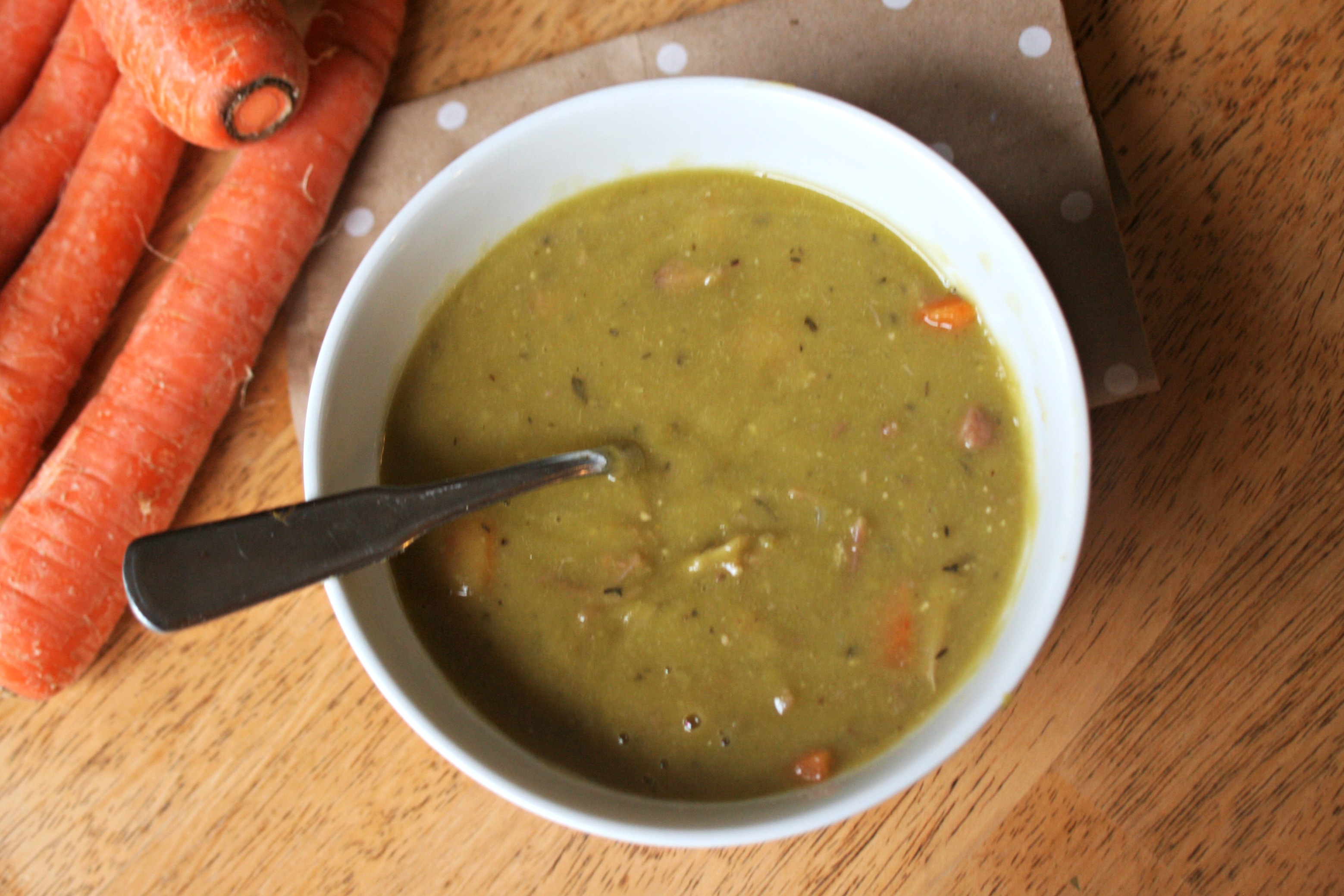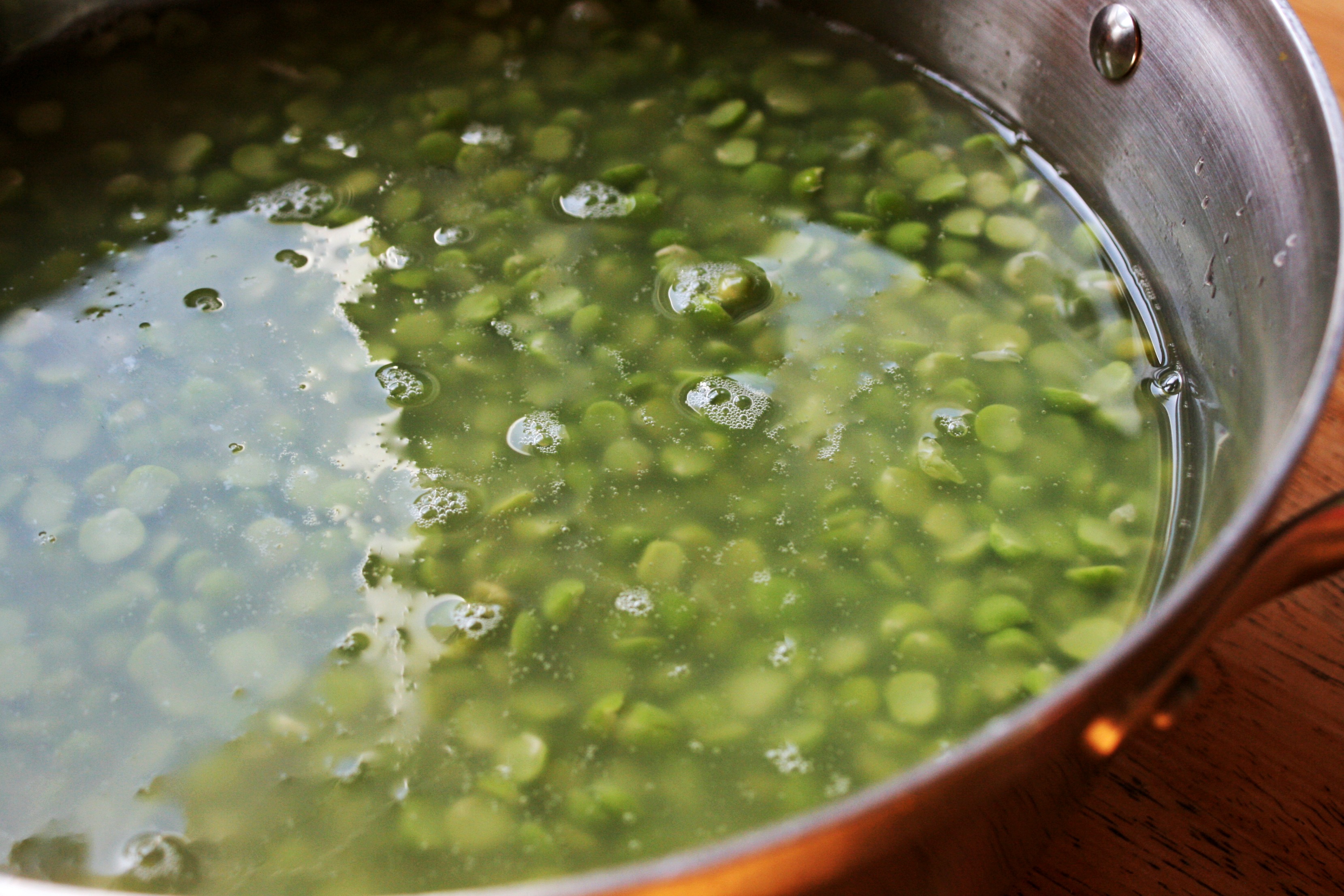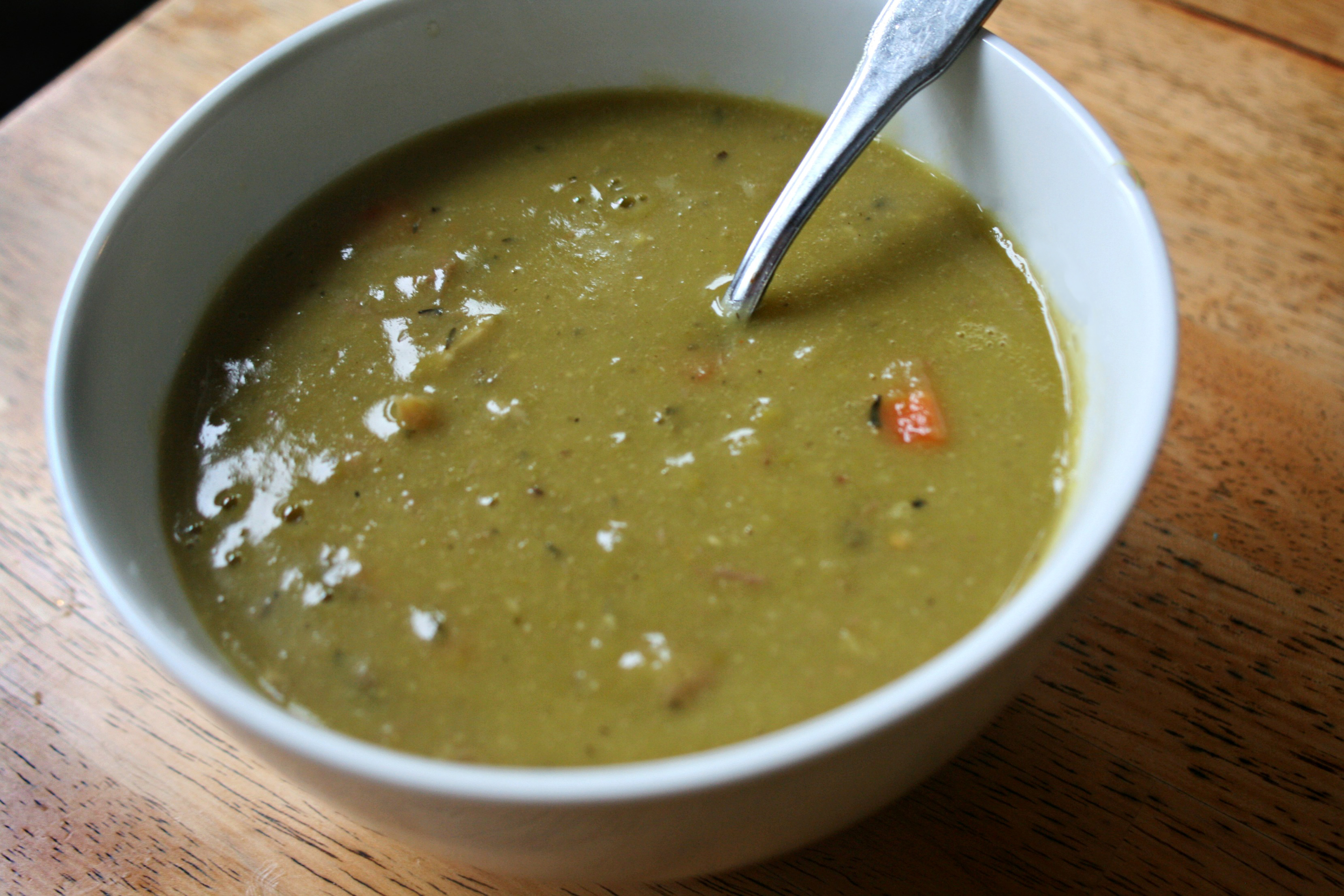It's officially springtime here. Muddy shoe prints can be found decorating the porch, dainty green leaves are unfurling from tired winter branches and rambunctious groups of birds are back to their noisy morning chatter at bedroom windows. Last week we enjoyed this hearty split pea soup recipe, a warming traditional meal that seemed the perfect fit for the cool and quiet evenings that follow bustling spring days.

As odd and strangely-green as it appears at first glance, pea soup is a nourishing dish that has long been a staple throughout global cuisine. Made by boiling legumes (generally split or yellow peas, but also with certain lentil and red bean variations) into a thick paste, this easy soup historically served as a relatively high protein and low cost meal for families, especially when coupled with a handful of chopped salt pork. Popular among sailors, soldiers and other travelers, pea soup was valued not only for a unique savory taste, but also for versatility, nutrient density and ease of preparation. By the 1800's, food industry leaders were already attempting to manufacture instant versions of this beloved, economical classic that were appropriate for more "modern" cooking styles.
Although pea soup can't really be counted as a staple for most people following the Standard American Diet today, it certainly remains a hearty and delightful meal to be enjoyed from time to time. I will always remember my Dad's enthusiasm in simmering an occasional pot of gurgling split pea soup on the stove to have ready after a long day of skiing on chilling winter days- one of his few culinary endeavors. With its complex, slightly smoky flavor and intriguing color, this soup can really be served at any time of year, either as a stand-alone dish or prelude to a main course.
The dried peas that make up the base of this recipe can be found inexpensively in the bulk section at many grocery stores. They are produced by simply collecting matured fresh pea pods and dehydrating the contents. Once the tiny green peas are sufficiently dried and the skins removed, they naturally fall in half- hence the term "split pea." Peas are known for being a particularly tasty and nutritionally valuable variety of legume with impressive fiber content as well as notable stores of manganese, copper, protein, vitamins B1 and B5, phosphorous and potassium.

When working with peas, it is important to take care in properly preparing them to optimize nutrient content. As with most legumes, peas contain naturally occurring anti-nutrients and phytic acids that can be troublesome to the human GI system if consumed raw. By soaking peas for several hours and then slow-cooking them, the vegetable proteins will be rendered more digestible and pesky phytic acids will be neutralized, allowing the previous vitamins and minerals to be better absorbed. These effects can be enhanced by serving peas with digestion enhancing spices, a source of fat and/or fermented foods such as chutneys or dairy products if tolerated. You can learn more about legumes and the soaking process in the article Putting the Polish on Those Humble Beans as found in the Winter 2006 Wise Traditions Journal.
Split Pea Soup Recipe
This recipe was inspired by the Roman Lentil Soup found in Nourishing Traditions. It has been switched around based on personal preferences. Note that many people use a meaty ham bone or add chopped ham to their split pea soup. I did not include that variation here, however if you wish to use it, simply follow the recipe below using all water instead of stock, and add ham bone in with the peas. Allow to simmer for about 2 hours before removing bone and proceeding with steps to cool and serve soup.
Ingredients
3 medium onions, peeled and sliced
2 tablespoons grass-fed ghee (like this or make your own)
2 tablespoons extra virgin olive oil (like this one)
2 quarts filtered water or chicken stock or a mix of the two (learn how to make chicken stock here)
2 cups dried split peas, soaked for 7 hours or overnight
3 carrots, peeled and chopped
3 stalks celery, chopped
2 tablespoons dried thyme
1/4 cup fresh lemon juice
unrefined salt and pepper to taste
The night before, place peas in large bowl or pot, adding filtered water to cover. Allow to sit at room temperature for at least 7 hours. On the day of, strain and rinse peas.
Melt ghee and olive oil in large stainless steel pot or dutch oven over medium-low heat. Add onions and sauté until soft. Add stock/water and soaked split peas, bringing to a boil. This will generate a significant amount of foam- skim from top and discard. Reduce heat and purée soup carefully with a handheld blender. Add spices and remaining vegetables. Simmer for another hour, covered, or until carrots are soft. Remove from heat. Soup may appear watery and thin at this point, but will thicken as it cools. Add lemon juice just prior to serving. Season with salt and pepper to taste.

